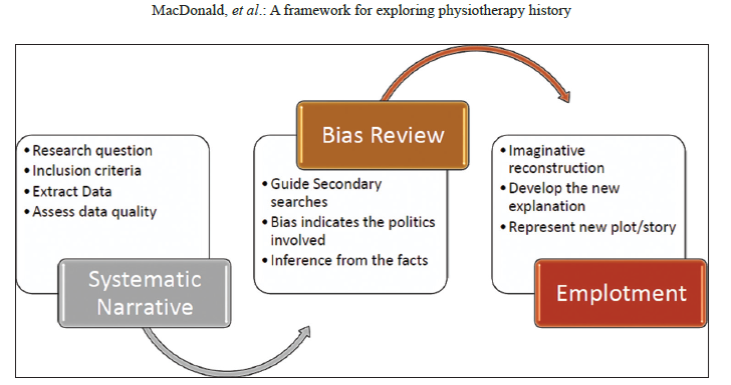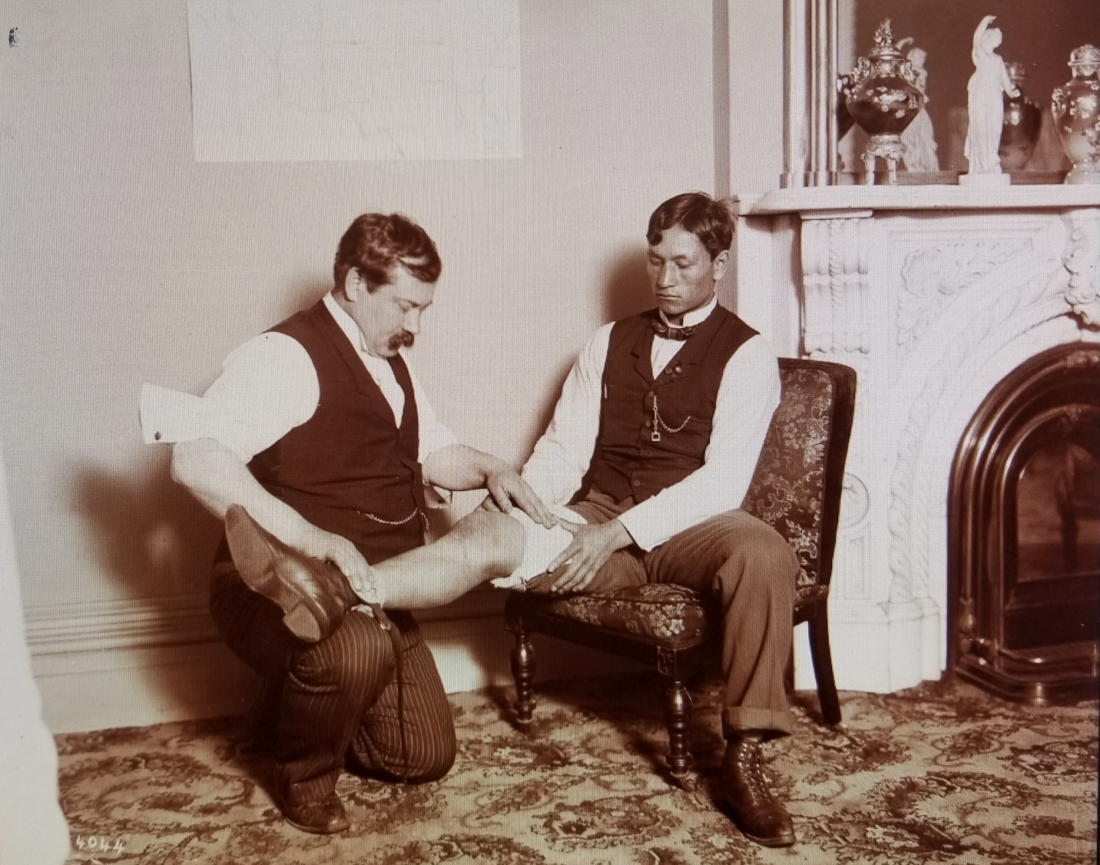Modern medical research dictates that studies with a potential for bias be identified and excluded from a systematic review. Historical research approaches dictate the opposite.
The more bias that is present in a study, the more it has the potential to indicate likely reasons, and political or social causes and conditions, that a historical event occurred and how it has been represented. This informs us as to what social and political forces were at play to influence the historical genesis. Within physiotherapy, to inform our historical narrative, we need the unpolished version of events and the contexts of the time that they occurred. In the consideration of these two competing approaches, a middle ground may provide fruitful discovery.
Recent research has been completed, as part of a doctoral thesis on the history of manual therapies for all professions, to identify a new type of historical method for physiotherapists (and other health care practitioners) to be utilised. The method is a hybrid approach designed to allow scientifically trained physiotherapists to cast a historical lens to answer questions about the development of the profession, and to do this using modern systematic approaches blended with historical methods that embrace bias.
Classically, physiotherapy approaches to the study of history were more based upon recounting of historical events known to have happened, with less focus about why they happened. There are stand out, excellent examples where a more phenomenological study was undertaken (Nicholls, Linker) to understand why events occurred, but for formal research, study options are limited.
Specific to the physiotherapy profession, rather than the established systematic review approach typically used to answer questions, this approach necessitates theorization/emplotment as a terminal step in producing an historical narrative. It is expected that this type of approach, allowing for an initial systematic framework in historical research, then moving to discovery and a more sociopolitical reconstruction of events that recognises bias as a signal of the exercise of political intentions, will challenge historical research concepts in physiotherapy, providing an alternative as professions develop needed depth and variation within their historical study.

Fig 1. HSAT tool
A descriptive tool, the historical source assessment tool (HSAT) [Figure 1] was developed to score the included primary resources based on the resources determined authenticity, credibility, and representativeness. A method for determining the usefulness of identified resources across the three domains was adapted, expanding each to include three indicators, providing nine overall domains in which to identify the level of potential bias in a resource.
Recognising that our research sought to permit new historical themes to emerge instead of reinforcing historical themes and stories of others led to the adoption of a preferred, and more valuable use of this tool; to determine which types of bias are present in identified resources, and to utilise the bias to inform the future emplotment of the historical narratives.
To see behind the curtain of why a new approach was devised to support on ongoing (and now complete) Doctoral Thesis on the historical development of manual therapy, see MacDonald CW, Parkes R, Osmotherly PG. Developing an Analytical Framework to Discern Historical Developments in Physiotherapy. Archives of Medicine and Health Sciences, Sep-Dec 2024;12(3):426-431. DOI: 10.4103/amhs.amhs_153_24.


You’ve done a great job of simplifying things here.
This was a very thought-provoking post—thank you!
I really appreciate the examples you provided.